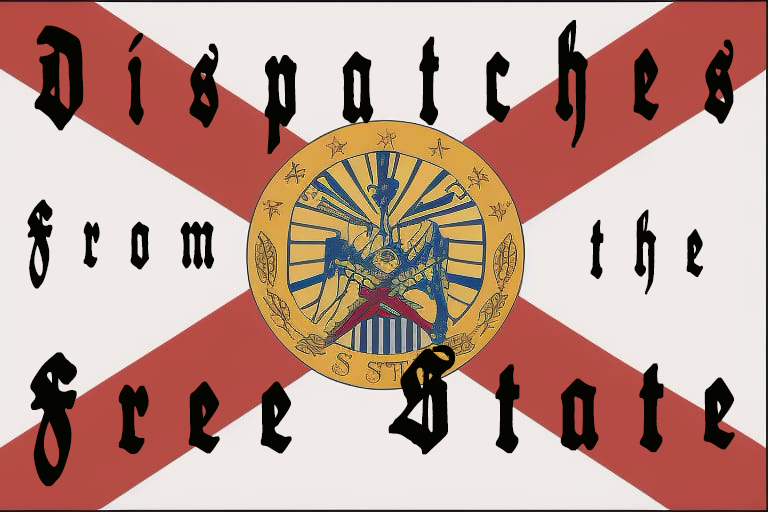ON THE POLITICAL WILLINGNESS TO TEAR IT ALL DOWN
I’m a bit behind on my journal reading, but I’ve endeavored to catch up in the last couple of weeks as the school year is winding down. Among the first studies I read was Joshua Bloom’s analysis of the Truman Administration and the Civil Rights Movement published in the American Sociological Review. In essence, Bloom is talking about something that plays a role in my own research (I know, I know, I’m working on it…shut up!), the willingness of a social movement to bring down an institution in order to coerce it into acting on the movement’s behalf. It is part of my thesis that democratic progress happens most quickly when the Demos becomes a threat to the established order.
Bloom is interested in understanding how an avowed racist like Harry S. Truman came to be the first American president to advance a civil rights platform. “As president…[Truman] expressed racial attitudes in private that would make vehement white supremacists proud…. But in the second half of his first term, in a dramatic departure from earlier policies, Truman adopted strong measures of civil rights advocacy.” The traditional explanation for this shift is a macro level analysis on the impact of cold war competition with the Soviet Union on civil rights advocacy. In the late 40’s, a time in which the United States was trying to bill itself as the harbinger of democracy and freedom to the rest of the world, the existence of Jim Crow and use of lynching to enforce segregation was a blight on any such claims. If nothing else, the USSR could point to the fact that such race based oppression did not exist in the soviet system. This might be a significant argument, especially if both parties were intending to expand their interests in Africa.
This is called opportunity theory, the idea that movements progress when macro level changes create opportunities for the movement to do so. Bloom, however, offers a meso level addendum to the opportunity theory. This makes sense. After all, if macro level changes do take place, organizations at the meso level must exist in order to take advantage of those opportunities. In this case, Bloom elaborates the political dance that took place between disillusioned political progressives and anti-colonialist black activists and their influence over an increasingly unpopular Truman administration.
Bloom points out that the New Deal Coalition as it was constructed by Franklin Roosevelt was troubled in the late forties. The system tenuous as urban progressives in the north were often at loggerheads with their more conservative Southern Democrats. FDR often managed this complicated coalition by turning his back on civil rights activists like A. Philip Randolph, while at the same time offering just enough incentives to convince the black community that the Democrats offered a better deal than did the Republicans. Not elaborated by Bloom was the fact that African Americans became a significant constituency of the Democratic Party under FDR despite the paucity of his civil rights platform.
This delicate balance between largely northern and western progressives and Southern conservatives was wavering when Truman fired Henry Wallace from his administration. “Many progressives saw Wallace as the true heir of FDR and believed his departure from the Truman Administration made a third party effort in 1948 inevitable.” Truman found himself facing the possibility of a split party in what was already presumed to be a close election. The existence of this Progressive Challenge was a significant crack in the New Deal edifice, a fissure that the more radical black anti-colonialists were willing to use to leverage a discussion of the civil rights agenda, most notably the shamefully stalled anti-lynching legislation.

The Black Anti-Colonialist movement, represented by activists like Paul Robeson and W.E.B Dubois, was much more radical than were the more mainstream civil rights activists. The bodily resistance of sit-ins and marches were not yet a main line of activism in the mid forties because as Bloom points out, “bodily violation of Jim Crow in 1946 was likely to result in death, or at best incarceration with little hope of support.” Consequently, more radical Black Anti-Colonialists responded by directly challenging the President, pointing out the hypocrisy of his civil rights positions, petitioning the UN for international intervention in the Jim Crow South when demands for an anti-lynching law failed in the legislature over and over again. All of these mechanisms were an international embarrassment for the United States.
Things came to a head, however, when the Black Anti-Colonialists used the rising Progressive Challenge from Henry Wallace to promote its agenda. To gain support from the black community the progressive movement embraced the civil rights agenda, offering to pull two important constituents from the New Deal Coalition. Truman, facing a difficult re-election in 1948, was forced to embrace a civil rights agenda. Bloom aptly uses Event Structure Analysis (ESA) to determine a causal relationship between the actions of Black Anti-Colonialists and the ultimate civil rights platform of the Truman Administration. Using this approach, Bloom offers a strong argument that the meso-level actions of the Black Anti-colonialists was a causal influence on Truman’s eventual civil rights actions.
To satisfy the more mainstream civil rights activists while marginalizing the more radical Black Anti-Colonialists, Truman created the Presidents Committee on Civil Rights (PCCR) to study the causes and consequences of racism in the United States. Truman would ultimately become the first U.S. President with a true civil rights platform. This platform was designed to placate the mainstream civil rights movement, such as the NAACP and hold onto the reasonably disgruntled black sector of the coalition. Truman would, by executive order, desegregate the military. H also supported anti-lynching legislation. These moves were linked to a more general progressive turn as the administration tried to reverse the unpopular Taft-Hartley Act, an important goal of the labor movement. It was during this time that the civil rights agenda became part of the progressive platform.
According to Bloom, Truman’s actions were successful in undermining the Black Anti-Colonialists as an influence on the early civil rights movement. Radicals like Robeson and W.E.B Dubois were cast aside as more mainstream leaders achieved political legitimacy from Truman’s civil rights actions. Bloom refers to this as the End of Black Anti-Colonialism, “as Truman adopted civil rights advocacy and created strong alliances with Walter White, A. Philip Randolph, Max Yergan, and other key black leaders, the president and his new allies effectively repressed and destroyed Black Anti-colonialism.” This is certainly true, though I would argue that it was hardly the “end” of Black Anti-Colonialism. As an institution, these actors would have had to innovate and re-organize. Though it could be said that this more radical element was suppressed, and some, like Dubois, did disappear from American life, the Anti-
Colonialist ideas remained.
Also not elaborated by Bloom was the fact that, ultimately, Truman did face a third party challenge from the other end of the spectrum as Democratic segregationist Strom Thurmond split from the party and challenged Truman from the right with his States Rights Democratic Party. Regardless, it is clear that Truman’s calculation through which he chose to embrace civil rights was the correct bet. He won an excruciatingly close re-election.
The important take away from this study is more along the lines of my own research. The Black Anti-Colonialists, in taking advantage of a rift in the Democratic Party, demonstrated what I believe is a core principle for democratic action: the willingness to bring down an institutional entity like the Democratic Party when it is no longer addressing the needs of the Demos, to become a real threat to the established order. On the part of Black Anti-Colonialists, it seemed that the Democratic Party and the New Deal Coalition was the only song and dance in town. Surely a Republican led government would, at that time, have been blind and deaf to the needs of the black community.
Yet the Democratic Party was hardly a friend to the black community. From the perspective of the radicals like Dubois and Robeson, supporting the Democrats was, at best, a co-dependent relationship in which the black community was forced to suffer abuse and neglect lest it find itself in a worse condition. Such was a form of institutional blackmail that the Black Anti-Colonialists were willing to explode by hammering against the cracking foundations of the party and bringing it down, causing it to lose the coming election.
Contrast this to the progressive position at the beginning of the twenty-first century. The seeming success of the New Democratic caucus in the Democratic Party in the face of a forty years conservative insurgency has pushed the progressives to virtual marginalization, despite the fact that the progressive platform is still very popular. Every election cycle progressives face the depressing choice between a milquetoast candidate like Al Gore, John Kerry, Hillary Clinton or Barack Obama, and the possibility of an increasingly dogmatic and extremist version of conservatism. Liberals feel that they are forced to support candidates who do not support the progressive agenda except in their willingness to preserve Social Security, Medicare and a woman’s right to an abortion, or take the chance that what little progress that remains from the New Deal is lost forever to a conservative tide.
So progressives have, for forty years, played it safe, played it quiet, held their noses and pulled the lever for second rate candidates whom they felt were the least bad, like Hillary Clinton or Al Gore, or at best for a candidate whom they vainly and mistakenly hoped was a closet progressive running as a centrist until he would take office and let his lefty colors fly, like Barack Obama. Every year progressives lose a little more in what has become a piecemeal dismantling of the New Deal and the Great Society. Consequently, contemporary liberalism has more in common with true conservatism in that it is the goal to preserve and protect these traditional progressive policies, the New Deal, the Great Society, Civil Rights and equality at the expense of pursuing true liberalism, providing innovative ideas for making society more free and equal in the face of growing power structures.
Bloom’s research demonstrates that if progressives hope to effect progressive change, they may have to be willing to pursue a course of action that threatens to tear down the very institutions they wish to preserve. After all, those institutions have long since abandoned progressivism. Let’s face it, this tactic explains the success of the Tea Party and the far the right. After the election of Barack Obama the Tea Party did not hesitate to challenge more centrist incumbents even when that meant taking a chance that the Republican Party would lose seats in congress. Of course, at that point, the Republican Party had little to lose, having been totally delegitimized by the fiasco that was the Bush Administration. Bottom line is that the gamble paid off. The conservative element of the Republican Party has been ascendant even if the Tea Party itself is becoming more marginalized.
If, say, Bernie Sanders, becomes the contemporary equivalent of the Progressive Challenge, then it is in the interests of left liberals and progressives to jump on that bandwagon. If that means that Hillary Clinton loses–again–and we have to deal with four years of another Bush, so be it. It is time for progressives to make their voices heard. Now, with the rise of the so called Warren Wing of the Democratic Party, a fissure may be opening through which to hammer at the foundations of what has become a disappointing Democratic Party.






Leave a comment